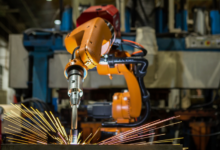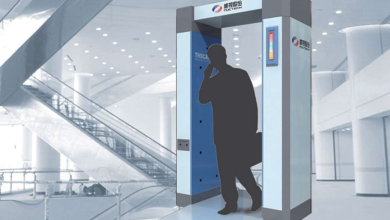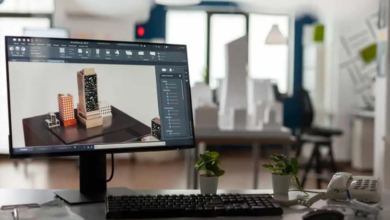Interactive Flat Panel Classrooms: Revolutionizing the Modern Learning Experience

In the rapidly evolving landscape of education, technology continues to reshape the way we teach and learn. One of the most significant innovations in this realm is the interactive flat panel display, which has transformed traditional classrooms into dynamic, engaging environments. This article delves into the concept of interactive flat panel classrooms exploring their features, advantages, applications, and the profound impact they have on contemporary education.
What Is an Interactive Flat Panel?
An interactive flat panel (IFP) is a digital display that combines the functionality of a traditional whiteboard with the power of modern touch-screen technology. Unlike conventional whiteboards that rely on markers and erasers, interactive flat panels provide a high-resolution touch-sensitive surface where users can interact with digital content directly. These panels are designed to facilitate a more interactive and immersive learning experience by integrating digital tools into the classroom environment.
Core Features of Interactive Flat Panels
Touch-Sensitive Technology: The primary feature of interactive flat panels is their touch-sensitive display. This technology allows users to interact with the content by touching, swiping, or writing directly on the screen. Many interactive flat panels support multi-touch functionality, enabling multiple users to engage with the display simultaneously.
High-Definition Display: Interactive flat panels are equipped with high-definition screens, such as Full HD (1080p) or 4K resolution. This ensures that text, images, and videos are displayed with exceptional clarity and detail, enhancing the overall visual experience in the classroom.
Integrated Software: Most interactive flat panels come with built-in software designed to support interactive learning and collaboration. This software includes tools for creating and managing digital lessons, annotating content, and conducting interactive activities. Features such as screen recording, multimedia integration, and real-time collaboration are commonly included.
Connectivity Options: Interactive flat panels offer a range of connectivity options, including HDMI, USB, and wireless connections. These options allow the panel to integrate seamlessly with computers, tablets, and other digital devices, providing flexibility in accessing and sharing educational resources.
Multi-Touch Capability: Advanced interactive flat panels support multi-touch inputs, allowing several users to interact with the display at the same time. This feature is particularly beneficial for collaborative activities and group work, enabling students to work together on the same screen.
Benefits of Interactive Flat Panels in the Classroom
Interactive flat panels offer numerous advantages that contribute to a more effective and engaging learning environment:
Enhanced Student Engagement: By allowing students to interact directly with the content, interactive flat panels significantly increase engagement. The ability to touch, draw, and manipulate information keeps students actively involved in lessons, leading to better focus and retention.
Versatile Teaching Tools: Interactive flat panels provide a versatile range of teaching tools. Educators can create dynamic lessons, incorporate multimedia elements, and use interactive features to cater to different learning styles and needs. This versatility makes the teaching process more engaging and effective.
Improved Collaboration: The multi-touch capabilities of interactive flat panels enhance collaborative learning. Students can work together on group projects, solve problems, and participate in interactive activities, all while interacting with the panel. This collaborative approach fosters teamwork and communication skills.
Instant Feedback and Assessment: Interactive flat panels allow for real-time feedback and assessment. Teachers can gauge student responses instantly, address questions, and adjust their teaching strategies based on immediate feedback. This responsiveness improves the overall effectiveness of instruction.
Access to Digital Resources: With internet connectivity and integration with digital resources, interactive flat panels provide access to a wealth of online content. Educators can incorporate videos, interactive simulations, and other digital materials into their lessons, enriching the learning experience and broadening students’ knowledge.
Applications of Interactive Flat Panels in the Classroom
Interactive flat panels can be used in a variety of ways to enhance classroom instruction and foster a more interactive learning environment:
1. Interactive Lessons
Educators can use interactive flat panels to deliver engaging lessons by projecting slideshows, videos, and interactive content. Teachers can annotate and highlight key concepts, facilitate discussions, and use multimedia elements to make lessons more interactive and visually appealing.
2. Collaborative Activities
Interactive flat panels provide a platform for collaborative activities, allowing students to work together on group projects and interactive exercises. The ability to interact with the panel simultaneously promotes teamwork and enhances collaborative problem-solving skills.
3. Digital Note-Taking
Teachers can use interactive flat panels for digital note-taking, writing, and saving notes directly on the panel. These digital notes can be shared with students, printed, or saved for future reference, eliminating the need for traditional whiteboard markers and reducing paper waste.
4. Real-Time Assessments
Interactive flat panels support various assessment methods, such as interactive quizzes and polls. Teachers can use these tools to assess student understanding, provide immediate feedback, and adjust their instruction based on real-time assessments.
5. Virtual Field Trips
With their high-resolution displays and internet connectivity, interactive flat panels facilitate virtual field trips and interactive exploration of different subjects. Teachers can take students on virtual tours of historical sites, museums, and scientific phenomena, providing immersive learning experiences beyond the classroom.
Challenges and Considerations
While interactive flat panels offer numerous benefits, there are also challenges and considerations to keep in mind:
Cost: The initial investment in interactive flat panels can be substantial. For schools with limited budgets, the cost of purchasing and installing the equipment may be a concern. However, the long-term benefits and enhanced capabilities often justify the investment.
Training and Support: Effective use of interactive flat panels requires proper training and support for educators. Teachers may need professional development to become familiar with the technology and learn how to integrate it into their teaching practices effectively.
Technical Issues: Like any technology, interactive flat panels can encounter technical issues, such as connectivity problems or software glitches. Schools need to have reliable technical support in place to address these issues promptly and minimize disruptions.
Integration with Curriculum: To maximize the benefits of interactive flat panels, educators must integrate the technology effectively into their curriculum. This requires careful planning and alignment with educational goals to ensure that the technology enhances learning outcomes.
Maintenance: Regular maintenance is essential to keep interactive flat panels functioning optimally. This includes cleaning the screen, updating software, and addressing any hardware issues. Ongoing maintenance ensures the technology remains effective and reliable.
The Future of Interactive Flat Panels in Education
As technology continues to advance, interactive flat panels are expected to evolve and incorporate new features and capabilities. Some future trends to consider include:
Enhanced Interactivity: Future interactive flat panels may offer even more advanced interactive features, such as improved touch sensitivity, gesture recognition, and voice commands. These enhancements will provide users with more intuitive and immersive experiences.
Integration with Artificial Intelligence: Artificial intelligence (AI) is likely to play a role in the future of interactive flat panels. AI-driven features could include personalized learning experiences, intelligent content recommendations, and automated feedback mechanisms.
Augmented and Virtual Reality: The integration of augmented reality (AR) and virtual reality (VR) technologies with interactive flat panels could create immersive learning experiences. Students may be able to explore virtual environments, interact with 3D models, and engage in simulated scenarios.
Sustainability: As environmental concerns grow, future interactive flat panels may focus on eco-friendly materials and energy-efficient technologies. This shift will contribute to reducing the environmental impact of educational technology.
Improved Connectivity: Advances in wireless connectivity and cloud-based services will enable even greater flexibility and accessibility for interactive flat panels. This will facilitate seamless collaboration, data sharing, and access to online resources.
Conclusion
Interactive flat panels represent a significant advancement in classroom technology, offering a dynamic and engaging platform for teaching and learning. With their touch-sensitive displays, high-resolution visuals, and versatile software, these panels provide valuable tools for enhancing classroom instruction and fostering interactive learning environments.
Despite challenges such as cost, training, and technical issues, the benefits of interactive flat panels make them a worthwhile investment for educational institutions. As technology continues to evolve, these devices are poised to become even more sophisticated, incorporating new features and capabilities that will further transform education.
Embracing interactive flat panels in the classroom signifies a commitment to enhancing educational experiences and preparing students for a future where technology and interaction play crucial roles. The potential of interactive flat panels to revolutionize teaching and learning is immense, promising a more connected, engaging, and effective educational experience for students and educators alike.






